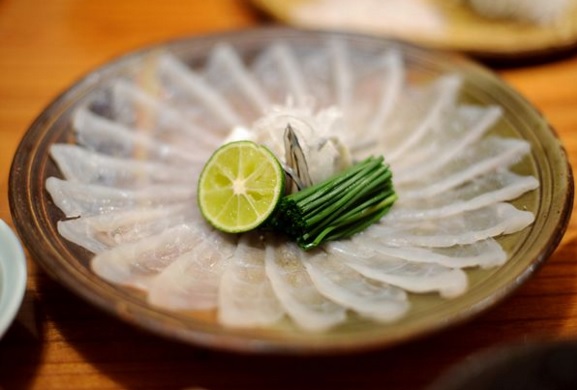Early Consumption and Bans
Fugu has been consumed in Japan for over two millennia, with bones dating back to the ancient Jōmon period (around 2300 BC). However, its potential toxicity also led to bans throughout history. During the Edo period (1603-1868), the shogunate banned fugu in Edo and surrounding areas. Despite this, samurai still risked eating it as a symbol of courage. As fugu farming techniques improved, consumption became safer over time.
Establishing Preparation Standards
During the early Meiji era (1867-1912), fugu was again prohibited in many regions due to poisoning deaths. However, some western areas continued eating it using new preparation methods. This highlighted the need for formalized safety standards.

Lifting the National Ban
In 1887, Prime Minister Hirobumi Ito was served fugu at an inn during a storm, praising its deliciousness. Inspired, he lifted the national ban the following year in Yamaguchi prefecture, pioneered by inn Shunpanro. This landmark decision launched fugu’s resurgence nationwide.
Fugu’s Cultural Significance Today
Fugu holds significant cultural prestige in Japan. According to chefs, the Emperor has never consumed it due to a centuries-old prohibition. Its enjoyment symbolizes bravery in tolerating risk. Licensed preparation remains strictly regulated to prevent accidental poisoning.
A Prized Delicacy
With its unique tender texture and subtle flavor, fugu is a highly prized seasonal delicacy. It is most commonly enjoyed as sashimi or in hotpots during winter months for its warming properties. Dishes feature thinly sliced meat and internal organs like the ovaries or milt.
Enduring Popularity
Despite awareness of toxicity, fugu maintains popularity as a daring culinary experience. Licensed chefs must undergo years of training to handle each species safely. When prepared skillfully, it presents negligible health risks. Fugu’s history and mystique have secured its legendary status in Japanese cuisine.
Progress in Safe Cultivation
While historically procured from the wild, growing fugu in controlled environments improves food safety. Advances in aquaculture allow producing non-toxic varieties by preventing contact with poison-causing bacteria in fish farms.
Establishing Standards
Government oversight sets strict standards for farmed fugu. Products must be certified toxin-free through testing before sale or export. These protocols help preserve fugu’s tradition with minimized health hazards.
Expanding Aquaculture
As wild populations face overfishing pressures, aquaculture helps meet rising fugu demand sustainably. Larger commercial farms now cultivate popular species across Japan in floating sea cages. This stable supply supports fugu’s role in high-end dining and gifting.
Fugu’s Global Reach and Cultural Exchange
Beyond Japan, Koreans also prize fugu as bok or bogeo. Chinese culinary works from the Song Dynasty mention it as a top Yangtze delicacy. Trade has further spread East Asian appetite for this symbol of bravery.
International Recognition
leading chefs worldwide now seek to recreate the nuanced flavors and knife skills of fugu preparation. Food documentaries also profile master chefs to introduce fugu’s mystique globally. This highlights its role bridging cultures through shared appreciation of adventure in dining.

 Getting Around London on the Tube, Buses, and Night Services
Getting Around London on the Tube, Buses, and Night Services